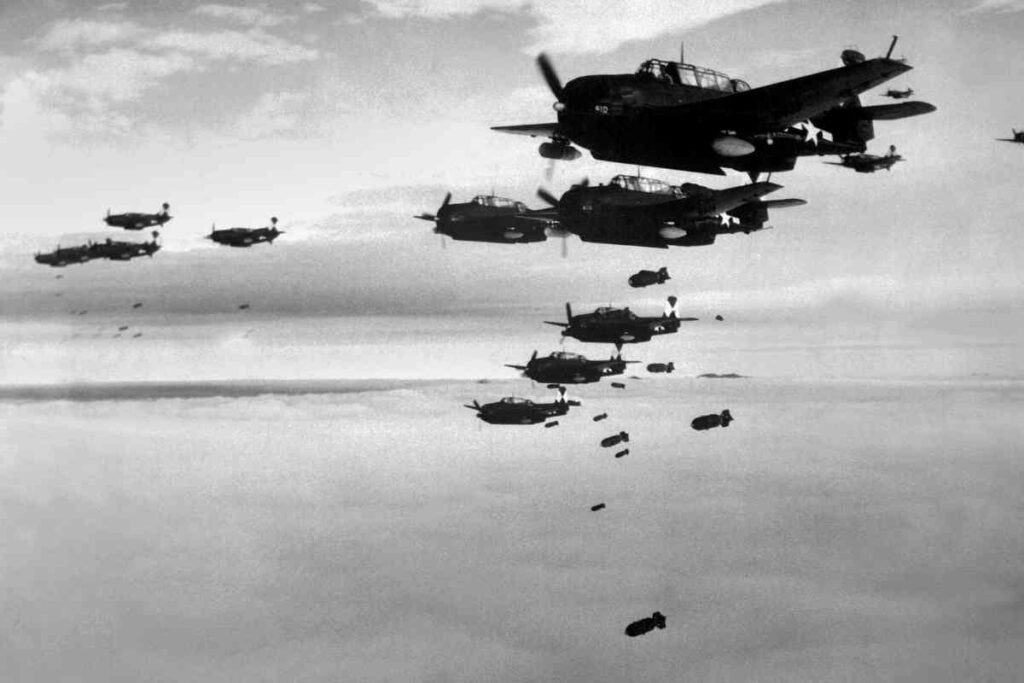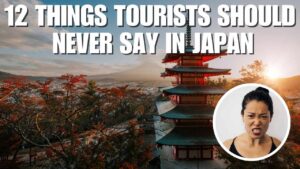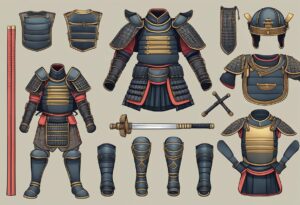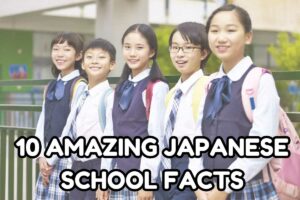Wondering which movie to watch about Japan? How about some of the best Japanese war films, either made in the USA or by Japanese directors?

From historical peplums to more recent productions, there are plenty to choose from.
Below, we list the best 5 Japanese war movies you can start watching immediately.
Table of Contents
1. The Battle of Okinawa
This is a classic movie, led by a Japanese film director, Kihachi Okamoto.
The movie dates back to 1971 and describes the harsh 1945 battle on the island of Okinawa.
This battle is one of the most horrific ones of the war in the Pacific.
The Plot
The battle of Okinawa lasted for 82 days, from April to June 1945.
It became the largest amphibious assault in the Pacific, during World War II. In Japanese, the battle is referred to as “Kotetsu no ame” or “rain of steel”.
The first part of the movie relates to the strategic planning of the battle.
Then the main protagonists of the movie become the priority: there are the victims of the battle.
Why Watch this movie?
In Japan, the film was released in 1971 and became the highest-grossing film of the year.
In the USA, its release came in 1973.
The top cast includes two Japanese stars:
- Tatsuya Nakadai
- Testsuro Tamba
Be aware that this is a brutal movie to watch. It may not be for everyone.
But this is why it is a strong film, with really bleak scenes based on a true story and a true setting.
It describes the most violent battle, with more than 150,000 casualties, with realistically bloody scenes.
It is impartial too, while not losing a sense of patriotism.
All In All – Despite some images that can feel old-fashioned, it is still one of the best Japanese war films, anchored deeply in war brutality.
Some critics may find it biased, but overall, it has a very realistic approach to the deadliest battle in the Pacific.
You can watch it on Paramount + Amazon, or fubo TV.
2. Hacksaw Ridge
This movie, directed by Mel Gibson, is a more modern approach to the Okinawa battle. Released in 2016, the original dialogues are in English.
Based on a real-life story, Hacksaw Ridge tells of a young American army medic that was also a pacifist.
As a member of the Adventist Church, he has one life motto: He will not kill.
The Plot
Despite his attitude as a pacifist, Desmond joins the army and soon finds himself in Okinawa to capture Hacksaw Ridge.
During the battle, he manages to save 75 American soldiers, with incredible courage.
Once he returns to the US, he is praised for his heroic actions, even by acquaintances that had criticized him.
The main actors in the cast:
- Andrew Garfield was nominated for the Best Actor Golden Globe award in 2017 for his performance.
- Hugo Weaving won the Best supporting actor award for his role in this film.
Why watch this movie?
The story is based on a real-life plot and conveys the battle atmosphere, as well as the confusion and the horror of the pacific war in Okinawa.
Despite being made by a Western film director, it also shows the patriotism of the Japanese soldiers and their no-surrender attitude.
Kevin Steincross, from Fox 2, described it as the best war movie since ‘Saving private Ryan’.
In Fact – The movie received 3 Golden globes nominations, including Mel Gibson for the Best Director award.
The film also won Academy Awards and AACTA awards in 2017, for Best film, Best Direction, and Best Actors.
3. Tora! Tora! Tora!
This is one of the most popular movies of all time and a best seller online.
This is a movie directed by both American and Japanese directors in 1970.
The original script published by Professor Gordon Prange was the basis for the screenplay.
The Plot
Following the trade embargo imposed by the USA on Japan in 1939, Japanese high-rank figures plan an attack on the US fleet based in Pearl Harbour.
The Japanese code for the attack of December 1941 is: “トラ・トラ・トラ” (Tora! Tora! Tora!).
Why watch this movie?
The two-hour movie captures the action, the history, and the emotions of the war, during the dramatic Pearl Harbour episode.
The American director, Richard Fleischer worked along with Japanese directors Toshio Masuda and Kinji Fukasaku.
This was their first English language film for both Japanese directors.
- Fun fact: they actually replaced Akira Kurosawa, after the initial weeks of shooting.
- Interesting fact: the original release of the movie included a line stating, “After the war, Japanese language would only be spoken in hell”. However, this line was removed from later releases of the film.
This movie is an American-Japanese co-production, letting both sides of the story be exposed.
It aimed at creating an objective perspective on the December 7th facts.
- Year of release in the USA: 1970
- A 1994 survey pointed out that the film was the first source of popular knowledge about the attack on Pearl Harbour.
- It received many nominations, including Best Cinematography and Best Visual Effects.
4. Letters from Iwo-Jima
This is a Japanese language American war film, directed by Clint Eastwood, retracing the Battle of Iwo-Jima, from a Japanese perspective.
There is a parallel movie called “Flags of our fathers”, also directed by Clint Eastwood, telling the American perspective.
Released in Japan and the USA initially in December 2006, it received several nominations from the Academy Awards and was released in more US states in 2007.
The Plot
The film describes the 1945 battle of Iwo-Jima, a Western pacific island lying around 1200 kilometers south of Tokyo.
Following American troops’ disembarkation on the island, and the attack on Mount Suribachi, disagreements and insubordination rose among Japanese high-rank personnel.
Kuribayashi orders Japanese troops to retreat. However, colonel Adachi authorizes collective suicide.
Why watch this movie?
The film is mostly all in the Japanese language, with subtitles in English, but an English-dubbed version also exists.
The cast is impressive:
- Ken Watanabe
- Kazunari Ninomiya
- Tsuyoshi Ihara
Time magazine named it Best Picture of the year, in 2006, and critics in the USA applauded the impartiality and humanity of the film.
Also Helpful ?
Some American critics called it a “masterpiece”. Both sides of the war are described equally, with their good and evil facts.
The movie shows how young these fighters were, either on the Japanese or American side.
The film also points out the humanity that could be found within this inhumane situation.
In Japan – The movie also received a positive reception, as it presented Japanese soldiers in a respectful way.
Despite being an American movie, it avoided typical Japanese stereotypes used in previous productions.
Nowadays, you can watch this film streaming on Netflix, HBO Max or Apple TV.
The soundtrack by Kyle Eastwood and Michael Stevens is also available on YouTube.
Take a Look ?
5. Operation Kamikaze, “The Eagle of the Pacific”
This is an older Japanese directed epic war film, from 1953, about the start of Japanese military action in World War II.
Directed by Hishiro Honda, the movie used special effects and achieved commercial success in Japan in 1953.
The Plot
It describes the actions of Japanese Admiral Yamamoto, who despite being opposed to the attack on Pearl Harbour, led his forces per the emperor and higher officials’ commands.
There are three parts to the film:
- Admiral Yamamoto’s opposition to Japan’s entry into the German & Italian pact.
- Once battle seems inevitable, parts two and three of the movie describes the attack and the end of the war.
Why watch this movie?
Japanese director Ishiro Honda, dedicated his film to the Japanese people, in the hope they never experience this tragedy again.
As a mid-1950s production, it does not have as many visual effects as Letters from Iwo-Jima, but it was made just 8 years after the end of World War II.
It gives the audience a very different perspective on the story.
The cast includes Japanese actors who also played parts in Kurosawa’s movies:
- Takashi Shimura
- Denjiro Okochi
- Toshiro Mifune
The movie is available on DVD with English subtitles.
A Brief History of Japanese War Films
Japan has a lengthy and overtly complex relationship with War. As a result, early days of Japanese cinema were dominated by the subject.
In fact, before the defeat of Japan in World War II, conflict in Japanese cinema was often glorified and heroic.
Used as a propaganda tool, war films promoted Japanese nationalism. Following their defeat, focus shifted from nationalism to highlighting and critiquing the devastating cost.
Reaching across more than a hundred years, there is a cornucopia of Japanese war films from the early 1900s to present day.
What is believed to be the earliest Japanese war film?
Depicting a battle between both Russia and Japan, off the coast of the island of Tsushima in 1905, The Battle of Tsushima (1912) was a silent motion picture by Tsunekichi Shibata (director) and Yokota Shokai (producer).
Even earlier than this, there was the 1910 Tsunekichi film telling the 47 Ronin story The Faithful Retainers. Again, a silent film in monochrome which was just twenty minutes long and was not strictly a war film but depicted Samurai conflict and is foundational to the Samurai genre.
Which Japanese war film has the longest runtime?
One of the earliest Japanese war films to cross the oceans, Seven Samurai (1954) is regarded as one of the best of all time. Set in the 1500s, it is concerned with a diversely gifted group of Samurai who rescue a village of people.
This historical movie is over three hours long and has influenced subsequent films like The Magnificent Seven (1960). A black and white feature film, it is more “Samurai” than “war”, but it is considered to be the longest Japanese war movie in cinema history.
That is, of course, discounting Masaki Kobayashi’s epic war trilogy The Human Condition. Parts one and two were released in 1959 and part three in 1961, equalling almost ten hours.
Which Japanese war film is the highest grossing?
The Eternal Zero (2013) accumulated around $80,000,000 of income from just the Japanese box office, and much more worldwide.
It also holds the title for the highest budget of more than six billion yen ($55,000,000).
Discovering his grandfather’s hidden past as a World War II pilot, the protagonist confronts this troubled part of his heritage in an epic dual narrative, mostly flashing back to wartime Japan.
As with many similar films, this is also based on a novel of the same name by Naoki Hyakuta. It was nominated for many awards and caused some controversy. Despite this, the film was praised for its accuracy and it is referred to as one of the best Japanese war films ever made.
Which is the most critically acclaimed Japanese war film?
Not only one of the longest trilogies on the planet, rivalled only by the likes of Peter Jackson’s Tolkien trilogies, The Human Condition (1959-61) by Masaki Kobayashi is one of the most critically acclaimed Japanese war movies of all time.
It consists of three feature length films: No Greater Love (1959), Road to Eternity (1959, and A Soldier’s Prayer (1961) Based on the book of the same name by Naoki Hyakuta (2006), it is literally described as a masterpiece of Japanese cinema and is regarded as one of the most influential films of the genre.
Winning numerous awards throughout 2013 and 2014 – major ones included:
- Mainichi Film Award (Best Film, Best Screenplay, Best Actor, Best Supporting Actor)
- Blue Ribbon Award (Best Film)
- Kinema Junpo Award (Best Film)
- National Arts Festival (Best Film)
Additionally, this movie received a tonne of nominations and other smaller awards as well. An anti-war film set in World War II, this story focuses on the brutality and disconcerting nature of War.
Which animated Japanese war film is considered most notable?
Dealing with the devastation of atomic warfare and the fallout, Grave of the Fireflies (1988) is an epic telling of the stories of a pair of siblings surviving the final months of World War II in Japan.
Directed by Isao Takahata, the film is an adaptation of Akiyuki Nosaka’s novel of the same name based on his own experiences of firebombing which took place in Kobe.
Winning an array of awards, the film has been acclaimed as one of the most prominent anti-war messages in Japanese cinema, and is widely regarded as a masterpiece of animation.
Which Japanese war film has the most unique story?
Being one of the best Japanese war movies it is no surprise that it is based on a novel, The Ballad of Narayama (1983) is regarded as one of the most unique narrative tales in the genre.
Author of the book with the same title Shichiro Fukazawa, tells a story from the perspective of an elderly lady: Orin, who is 70 years old.
It is set in a quiet Japanese village tucked away in the mountains during the nineteenth century.
Directed by Shohei Imamura, it is considered one of the most authentic, rural stories in Japan’s history of war films. With what are described as exceptional performances, it is purportedly an emotionally inspiring journey to take.
What is the most political Japanese war film?
Kon Ichikawa directed The Burmese Harp (1956) which is renowned for being one of the most political Japanese war films in history.
Again, the film is based on a novel with the same name by Michio Takeyama, published in 1946.
Set in Burma during World War II, the film is a poignant critique of conflict via complex characterisations of soldiers trying to persuade locals to surrender.
Criticising Japan’s role, it highlights the country’s ideological militarism in a convincing portrayal that is said to be a masterpiece of cinema and one of the most significant political films in the history of Japan.
What is regarded as the most important Japanese (post)war film?
There are in fact many such movies, but Yasujirō Ozu’s Tokyo Story (1953) is often listed as one of the best “war” films and one of the greatest films of all time.
An elderly couple make a journey from a rural area of Japan to Tokyo, in order to visit their children.
Acclaimed for its presentation of a sensitive portrayal of the socio-cultural Japanese landscape, it does not concern war directly, but focuses on the aftermath of it and the generational distances between those who suffered at its hands and those who live in the changing society that it left behind.
Another notable post-war film is Mikio Naruse’s When a Woman Ascends the Stairs (1960); considered a landmark in Japanese cinema history.
Conclusion
Watching war movies can teach us a lot about society in general.
Japanese war movies allow the spectator to understand more about the several war periods that Japan endured and therefore better understand modern Japanese society.
It is now easy to watch or rediscover the classic best Japanese war films online, starting with these five.
- 12 Things Tourists Should NEVER Say in Japan
- Kissing Robot: Exploring the Popularity of the Chinese Kissing App
- Unlocking the Secret Dating Rituals Only Locals Know in Japan
- Samurai Armor: Ancient Protection for Japan’s Elite Warriors
- 10 Amazing Facts About Schools in Japan: Unique Traditions and Educational Practices
- Where can you see snow monkeys in Japan: Best locations and viewing tips









